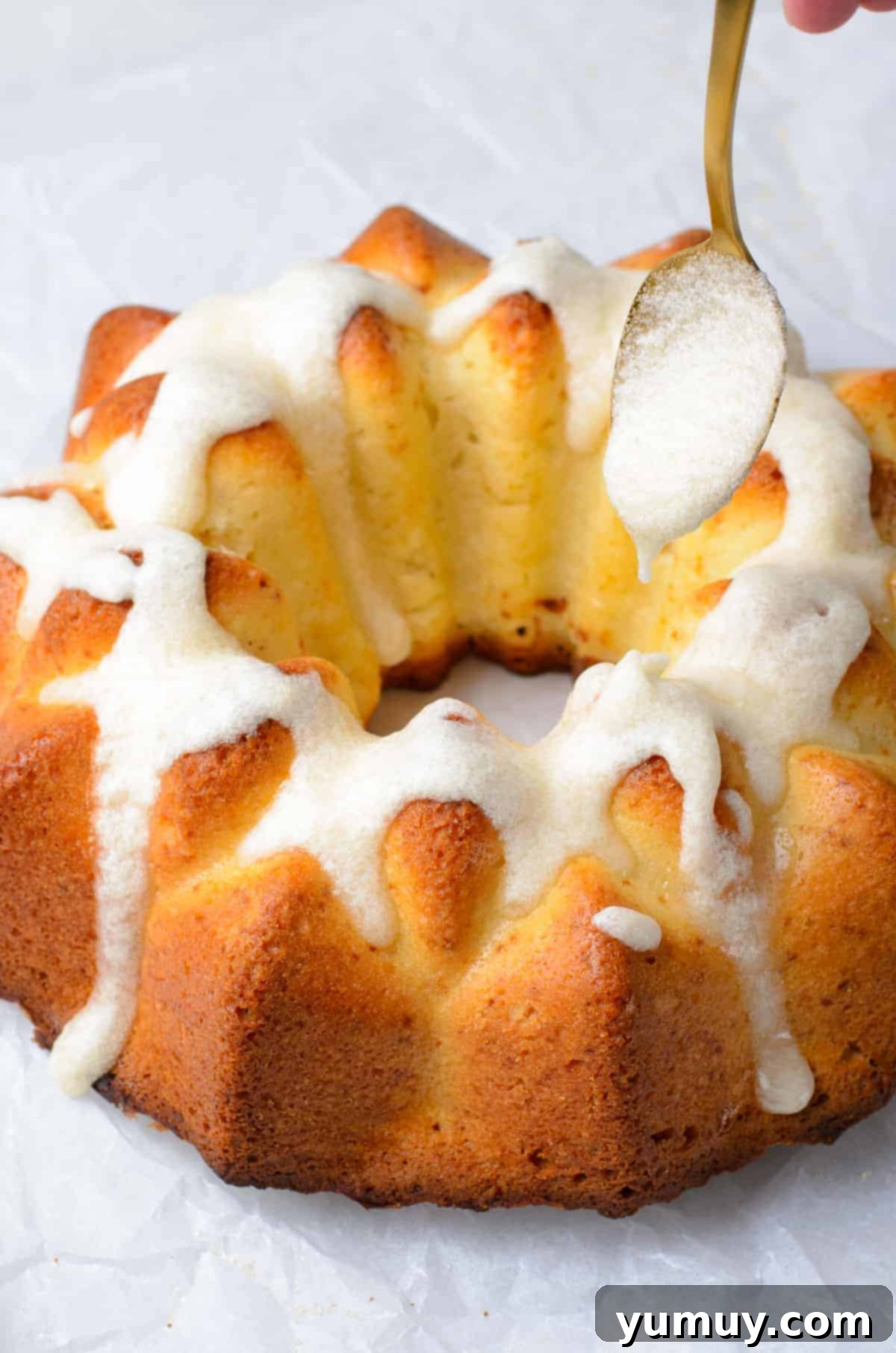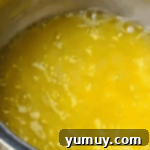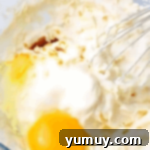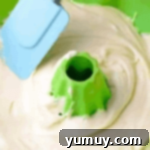The Ultimate Brown Butter Bundt Cake Recipe: A Decadent Delight
Prepare to be captivated by a dessert that truly redefines indulgence – our Brown Butter Bundt Cake. This isn’t just any bundt cake; it’s a masterpiece of flavor and texture, consistently delivering a moist, rich, and utterly show-stopping experience. What sets this homemade bundt cake apart is the remarkable depth of brown butter. Its distinct nutty, toasted, and caramel-like notes transform a classic into an unforgettable culinary journey. Each slice boasts a perfectly tender crumb that remains exceptionally moist, making dry cake a distant memory. This is the cherished recipe I’m frequently asked to contribute to potlucks and holiday gatherings, and it’s a perennial favorite in my own home. From its elegant bundt shape to the luxurious, silky brown butter glaze that cascades over its surface, this cake is as visually impressive as it is surprisingly simple to create. It promises to be a centerpiece at any table, delighting everyone with its complex yet approachable charm.
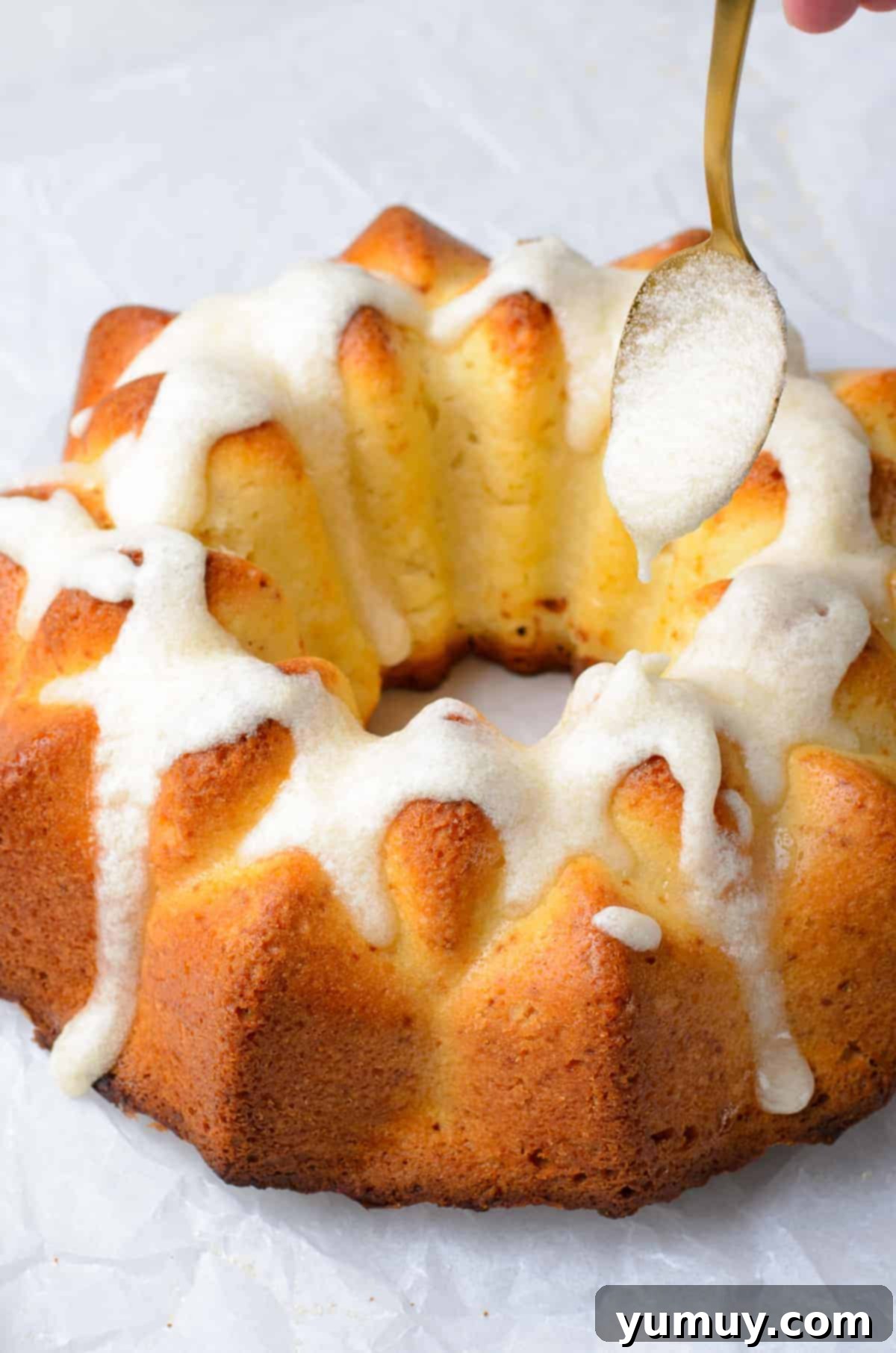
Unlocking Unforgettable Flavor: The Magic of Brown Butter Glazed Bundt Cake
The allure of this brown butter bundt cake lies in its profoundly deep and layered flavor profile, a complexity that traditional butter simply cannot achieve. The process of browning butter, while requiring a touch of patience and attentiveness, is an investment that yields dividends in taste. It infuses the cake with a warm, nutty richness and subtle caramel undertones, elevating it far beyond the ordinary. This golden transformation is the secret weapon, turning a simple bundt cake into something truly extraordinary. To further amplify this incredible flavor, a luscious brown butter glaze is meticulously prepared and poured over the cooled cake. This glaze not only doubles down on the cake’s inherent complexity but also bestows a sweet, glossy finish. As it slowly seeps into the cake’s tender crumb, it locks in moisture, ensuring every bite is supremely succulent and flavorful.
What’s truly remarkable about this brown butter glazed bundt cake is its accessibility. Despite its gourmet taste, the recipe itself is refreshingly straightforward, relying on just 10 common kitchen ingredients. There are no convoluted techniques or specialized equipment needed, making it an ideal choice for bakers of all skill levels. Once you experience the unparalleled depth of flavor and tender texture of this cake, I’m confident you’ll understand why it has become my most treasured and frequently baked bundt cake recipe. It’s a guaranteed crowd-pleaser for any occasion, from casual family gatherings to elegant celebrations.
If you’re as enamored with brown butter as I am, be sure to explore my brown butter spice cake for another cozy and warmly spiced treat that leverages this magical ingredient.

The Secret to a Tender Crumb: Mastering Brown Butter in Cake Batter
Successfully incorporating brown butter into your cake batter is a critical step that guarantees that irresistible tender crumb and moist texture. After you’ve achieved that perfect golden-brown hue in your butter, resist the urge to use it immediately. The most vital technique here is to allow the browned butter to chill until it returns to a firm, yet still spreadable, consistency. Often, I’ll brown my butter the day before, giving it ample time to solidify, then take it out a few hours before baking to let it soften slightly. This chilling and re-softening phase is absolutely essential. It enables the brown butter to be properly creamed with sugar, much like you would with softened regular butter. This creaming process creates tiny air pockets, which are key to developing a light and airy structure within the dense bundt cake. More importantly, this method ensures all the deep, toasted, and caramelized flavor from the browning process is locked into the batter, preventing it from separating or becoming greasy. This softened, re-solidified brown butter is the cornerstone of this recipe, contributing not only to the cake’s moistness and delicate crumb but also delivering that unmistakable, complex nuttiness that truly makes this bundt cake shine.
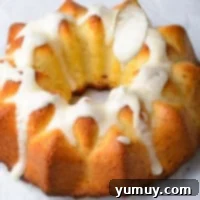
Average Rating: 4.58 from 14 votes
Brown Butter Bundt Cake Recipe
30
50
1
20
12
people
Ingredients
For the Brown Butter Bundt Cake
- 19 tablespoons unsalted butter room temperature (2 sticks + 3 tablespoons)
- 2 cups all-purpose flour
- 1 teaspoon baking powder
- ¼ teaspoon kosher salt
- 1½ cups granulated sugar
- 2 large eggs room temperature
- ¾ cup buttermilk room temperature
- 1 teaspoon pure vanilla extract
For the Brown Butter Glaze
- 1 cup powdered sugar
- 2 tablespoons brown butter reserved from above
- 2 teaspoons milk
- ¼ teaspoon pure vanilla extract
Equipment
- Kitchen Scale (optional)
- Fine-Mesh Sieve
- 10-Cup Bundt Cake Pan
- Hand Mixer
Instructions
- Melt the butter in a saucepan set over medium heat. The butter will get foamy and bubble. Cook until the butter solids in the bottom of the pan begin to turn deep golden brown. Immediately remove from heat to prevent burning.19 tablespoons unsalted butter

- Pour the browned butter through a fine-mesh sieve into a bowl. Allow to cool and refrigerate until cold but still soft. Reserve 2 tablespoons of brown butter for the glaze. Set aside.

- Sift together the flour, baking powder, and salt.2 cups all-purpose flour,
1 teaspoon baking powder,
¼ teaspoon kosher salt - Preheat oven to 350ºF. Grease a Bundt cake pan, dust with flour, and shake off excess. Set aside.
- In a large bowl, using a hand mixer, beat the brown butter and sugar until light and fluffy. Add the eggs, one at a time, and mix to combine.1½ cups granulated sugar,
2 large eggs
- Add the dry ingredients in 3 parts, alternating with the buttermilk in 2 parts. Add vanilla.¾ cup buttermilk,
1 teaspoon pure vanilla extract
- Pour the batter into the prepared Bundt pan.

- Bake for 45-50 minutes or until a toothpick inserted into the middle sections comes out clean.
- When the cake is done, transfer it to a cooling rack. Remove the cake from the pan. Place a plate over the top of the cake and flip the cake over. Let cool completely.
- For the glaze, in a medium bowl, beat brown butter, powdered sugar, vanilla, and milk together until smooth.2 tablespoons brown butter,
2 teaspoons milk,
¼ teaspoon pure vanilla extract,
1 cup powdered sugar
- Pour the glaze over the cooled cake. Allow to cool/harden.

Notes
- When greasing my bundt cake pan, I always use shortening. I’ve found that it works the best – my cakes never stick.
- Take care not to overmix the batter; otherwise, your cake may turn out dry and chewy.
- I always use the toothpick method to check for doneness. Because these cakes are so thick and dense, they take some time to cook all the way through, so you want to make sure it’s fully baked before cooling.
- Once your cake is baked, let it cool for about 20 minutes or until you can comfortably place your hand on the side of the pan. The pan should still feel very warm. Flip onto a plate or cake stand and tap around the pan until you feel the cake come out.
Storage: Store brown butter bundt cake in an airtight container at room temperature for up to 2 days, in the refrigerator for up to 4 days, or in the freezer for up to 3 months.
Calories from Fat 171
29%
75%
26%
5%
2%
17%
4%
40%
8%
12%
5%
6%
Becky Hardin
Did You Make This?
We love seeing what you’ve made! Tag us on social media at
@easydessertrecipes for a chance to be featured.
Step-by-Step Guide to Baking the Perfect Brown Butter Bundt Cake
Creating this exquisite brown butter bundt cake is a rewarding process. Follow these detailed steps to ensure a flawless, delectable result every time. Remember to read through the entire recipe card above before you begin for ingredient quantities and further tips.
1. Crafting the Golden Brown Butter
The journey to an extraordinary bundt cake begins with perfectly browned butter. In a medium-sized saucepan, melt 19 tablespoons of unsalted butter over medium heat. Keep a close eye on it: the butter will first foam, then bubble vigorously. Continue cooking, stirring occasionally, until the milk solids at the bottom of the pan transform into a beautiful, deep golden-brown color and a wonderfully nutty aroma fills your kitchen. This is the Maillard reaction at work, developing those signature caramel notes. The moment you achieve this color, immediately remove the pan from the heat to prevent burning, as butter can go from browned to burnt very quickly.
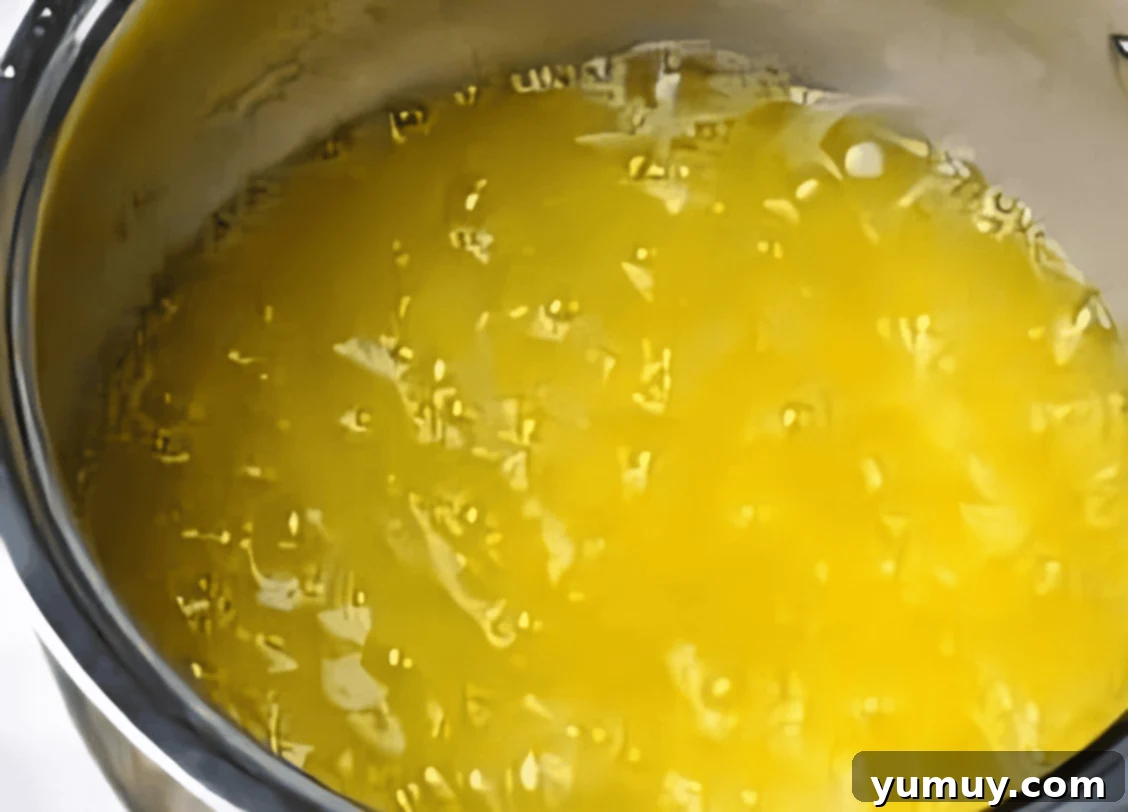
2. Cooling and Preparing the Brown Butter
Once browned, carefully pour the liquid brown butter through a fine-mesh sieve into a clean, heat-proof bowl. This step is crucial for separating the flavorful brown bits from any potential burnt residue, ensuring a smooth, pure butter flavor. Allow the strained brown butter to cool down at room temperature for a bit, then transfer it to the refrigerator. You want it to become cold and firm, but still soft enough to be spreadable. This might take a few hours or, ideally, overnight. Before you start assembling the cake, measure out and reserve precisely 2 tablespoons of this chilled brown butter in a separate small bowl for the glaze; set it aside at room temperature so it can soften slightly for easy mixing later. The remaining chilled, softened brown butter is for the cake batter itself.
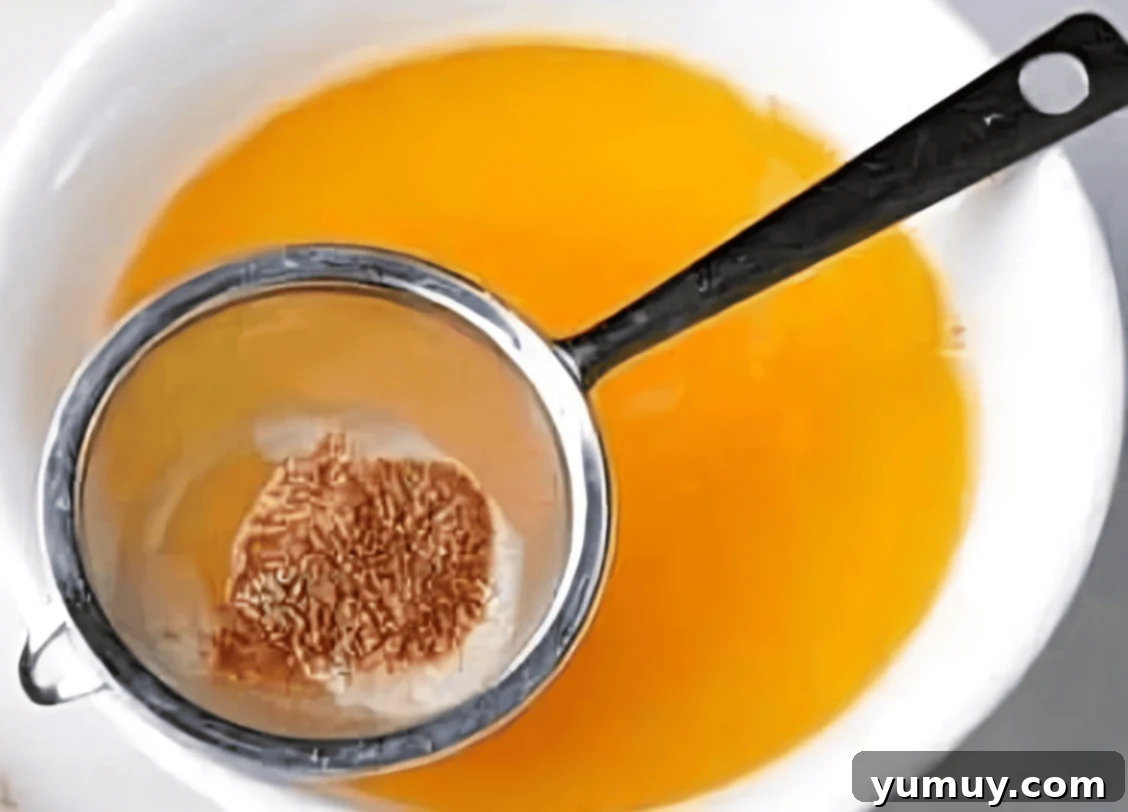
3. Preparing Dry Ingredients and Bundt Pan
In a medium bowl, whisk together or sift your dry ingredients: 2 cups of all-purpose flour, 1 teaspoon of baking powder, and ¼ teaspoon of kosher salt. Sifting helps to aerate the flour and ensures an even distribution of the leavening agents, preventing lumps. Now, prepare your bundt pan. Preheat your oven to 350ºF (175ºC). For greasing the pan, I wholeheartedly recommend using shortening – it creates a superior non-stick surface that ensures your beautifully baked cake will release perfectly every time. Apply a generous layer of shortening, then dust it thoroughly with flour, gently tapping out any excess. This meticulous preparation is key to preventing sticking. Set the prepared pan aside.
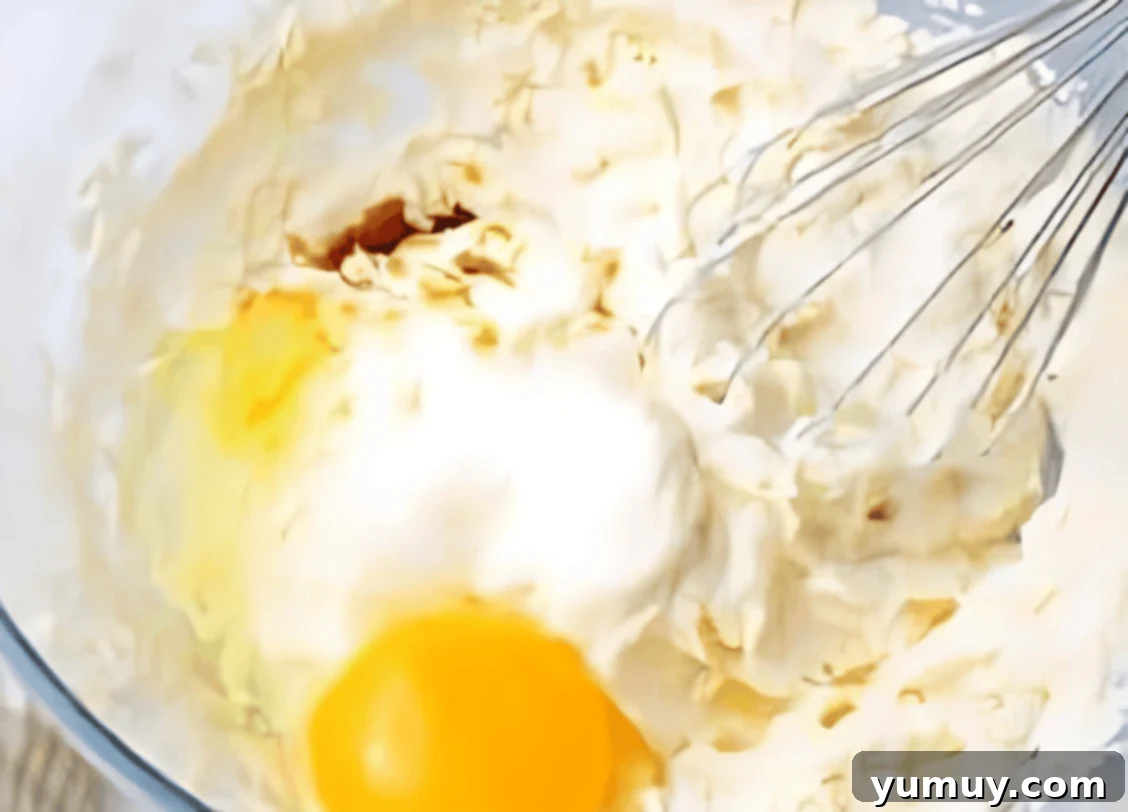
4. Combining Wet Ingredients and Batter Assembly
In a large mixing bowl, using a hand mixer on medium speed, beat the chilled, softened brown butter (the portion for the cake, not the reserved glaze butter) and 1½ cups of granulated sugar until the mixture becomes light, fluffy, and noticeably pale. This creaming process is vital for the cake’s texture. Next, add 2 large eggs, one at a time, beating well after each addition until fully incorporated. Ensure the eggs are at room temperature for better emulsification. Now, it’s time to build the batter. Gradually add the sifted dry ingredients in three separate additions, alternating with the ¾ cup of room-temperature buttermilk in two additions. Begin and end with the dry ingredients. Mix on low speed just until combined after each addition. Be careful not to overmix, as this can lead to a dense, tough cake. Finally, stir in 1 teaspoon of pure vanilla extract until just incorporated.
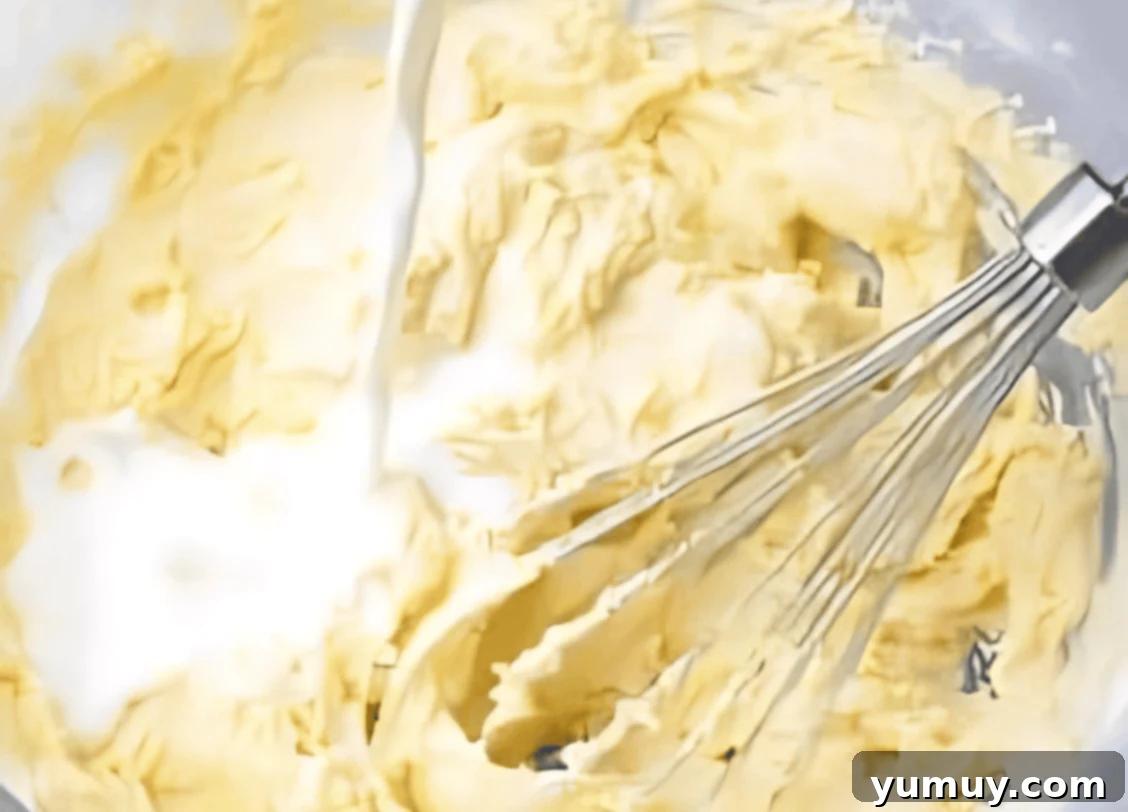
5. Baking and Cooling Your Bundt Cake
Gently pour the completed cake batter into your meticulously prepared bundt pan, spreading it evenly. Transfer the pan to your preheated oven and bake for 45-50 minutes. Baking times can vary, so keep a close watch. The cake is perfectly done when a wooden skewer or toothpick inserted into the thickest part comes out clean, with no wet batter attached. Due to their density, bundt cakes often require thorough baking, so ensure it’s fully cooked through. Once baked, remove the cake from the oven and place it on a wire cooling rack. Allow it to cool in the pan for about 15-20 minutes, or until the pan is still quite warm but comfortable to touch. This crucial resting period allows the cake to firm up. After resting, carefully invert the cake onto a serving plate or cake stand to unmold. If it doesn’t release immediately, a gentle tap around the sides of the pan might help. Let the cake cool completely to room temperature before glazing.

6. Crafting the Brown Butter Glaze
While your cake cools, prepare the show-stopping brown butter glaze. In a medium bowl, combine the reserved 2 tablespoons of softened brown butter, 1 cup of powdered sugar, ¼ teaspoon of pure vanilla extract, and 2 teaspoons of milk. Using a whisk or a hand mixer on low speed, beat these ingredients together until the glaze is completely smooth and free of lumps. Adjust the consistency if necessary: if it’s too thick, add a tiny splash more milk; if too thin, incorporate a little more powdered sugar until it reaches a pourable, yet substantial, consistency.
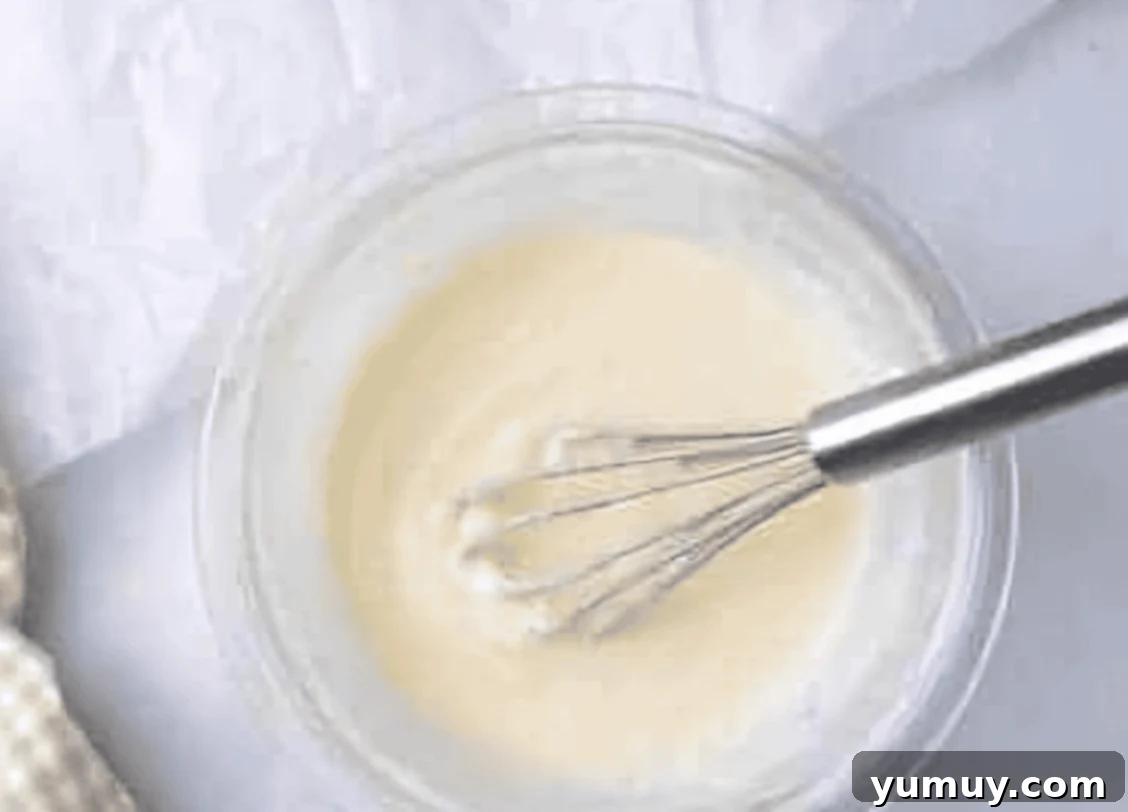
7. Glazing and Serving
Once the bundt cake has cooled completely, it’s time for the final touch. Slowly and evenly pour the exquisite brown butter glaze over the top of the cake, allowing it to artfully drip down the sides and into the beautiful crevices of the bundt mold. For a stunning presentation, you can use a spoon to guide some of the glaze or create a rustic, drizzled effect. Let the glaze set and harden slightly before slicing and serving. This allows the flavors to meld and the glaze to develop a delicate crust. Serve individual slices plain, or enhance the experience with a dollop of whipped cream, a scoop of vanilla bean ice cream, or a sprinkle of toasted pecans.
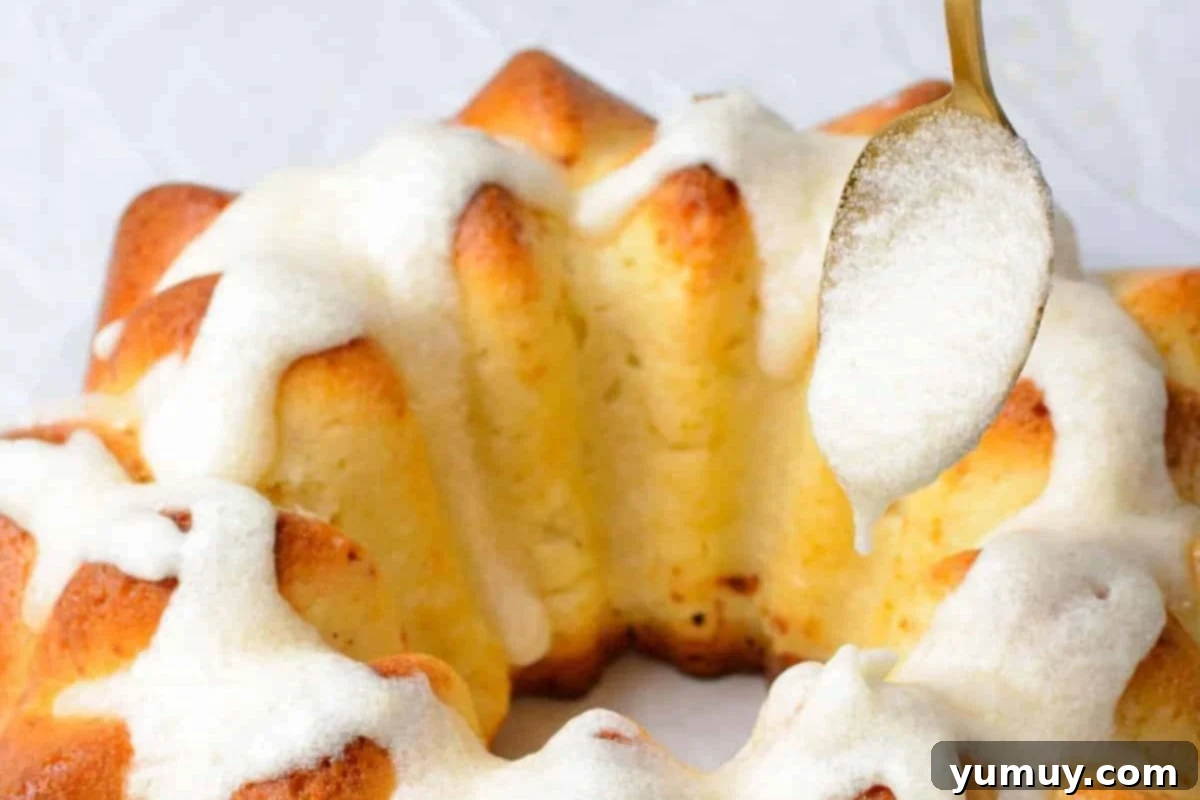
How to Store This Decadent Brown Butter Bundt Cake
To ensure your brown butter bundt cake remains as moist and delicious as the day it was baked, proper storage is key. For short-term enjoyment, store the cake in an airtight container at room temperature. It will stay wonderfully fresh and flavorful for up to 2 days. If you wish to extend its freshness, transfer the cake to the refrigerator, still securely stored in an airtight container, where it will remain delectable for up to 4 days. Before serving from the refrigerator, allow individual slices to come to room temperature for optimal texture and flavor. For longer-term preservation, this bundt cake freezes exceptionally well. Wrap slices or the entire cake tightly in plastic wrap, then an additional layer of aluminum foil, and place it in an airtight freezer-safe bag or container. It can be stored in the freezer for up to 3 months. When ready to enjoy, simply thaw the cake at room temperature for several hours or overnight in the refrigerator before serving. Avoid reheating the entire cake, as it can dry out; individual slices can be gently warmed if desired.
Frequently Asked Questions About Brown Butter Bundt Cake
Q: Can I use regular butter instead of brown butter?
A: While you technically can, using regular melted or softened butter will result in a completely different flavor profile. The nutty, caramel notes of brown butter are what make this cake truly special and distinct. I highly recommend taking the extra step to brown the butter for the best results.
Q: What if I don’t have buttermilk?
A: No problem! You can easily make your own homemade buttermilk substitute. For ¾ cup of buttermilk, pour ¾ cup of regular milk (dairy or non-dairy works) into a measuring cup, then add 1 tablespoon of lemon juice or white vinegar. Stir gently and let it sit for 5-10 minutes until it slightly curdles. This acidity helps tenderize the cake and activate the baking powder, just like real buttermilk.
Q: How do I prevent my bundt cake from sticking to the pan?
A: This is a common concern! The best method is to generously grease your bundt pan with shortening (not butter or cooking spray, which can leave residue) and then dust it thoroughly with all-purpose flour. Make sure to get into all the nooks and crannies of the pan. Gently tap out any excess flour. A well-greased and floured pan is the ultimate defense against sticking.
Q: Can I add nuts or spices to this bundt cake?
A: Absolutely! This brown butter bundt cake provides a wonderful base for customization. Toasted pecans, walnuts, or even a sprinkle of cinnamon or nutmeg could beautifully complement the brown butter flavor. Fold them into the batter during the final mixing stage. Just ensure any nuts are finely chopped to avoid them sinking to the bottom.
More Bundt Cake Recipes to Try!
Churro Bundt Cake
Blueberry Bundt Cake
Gingerbread Bundt Cake
Chocolate Zucchini Bundt Cake
All Cakes
